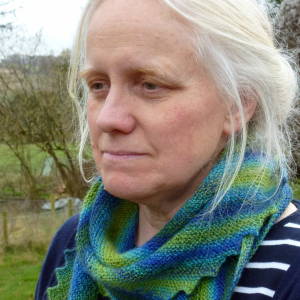Signs
Signs have been central to my family's life and communication since summer 1992, when we learned that our baby daughter was profoundly deaf as well as severely physically disabled - which means that although British Sign Language quickly became central to our communication with her and to her understanding of her world, she does not have enough independent hand function to sign to us. I blipped before about her communication aid / talking computer for a previous Mono Monday challenge.
The collage shows some little snippets of her and our sign language story. The words are J's, from her 2016 animation Imagination, which includes the papercut signing hands shown here, and, top right, from a poem she is still working on.
It's too late now for the fuller explanation - perhaps I will add it tomorrow. The collage is a bit of a mess, as my aspirations exceed my expertise with Canva; like J's poem, it's work in progress.
Edit - some supplementary explanations:
The Dave Benson Phillips DVD replaced the original video (because, years later, I wanted to use extracts as a teaching resource), and is a lovely collection of signed songs and nursery rhymes filmed firstly on a farm - lots of animal songs - and then in a school, with a mix of songs all build into a loose narrative. DBP was a children's television presenter - he used to sign on the BBC's Playdays, which predated the introduction of CBeebies by a decade or more. He uses Makaton, which is a sign language created for and largely used by people with learning disabilities; it's used in many special schools. The signs are largely based on a simplified version of British Sign Language (BSL), so although J understands and was educated in BSL, she has no difficulty following Makaton signing. When we first started learning BSL, I learned to sign "Five Little Ducks" from the video - my first full sentences. J loved it and we all learned a lot from it.
The very thick BSL dictionary was a monumental work which was finally published in the early nineties. The internet barely existed when we started to learn to sign, and dial-up connections could not support video - even images were used sparingly on websites for a long time - so books were our reference source, along with borrowed videos and "See Hear", the BBC magazine programme for the deaf community. The dictionary categorises signs by handshape, and the photos also indicate movement, with an accompanying written description of each sign. It looks very complicated now - these days, most people would use an app.
The two cut-out images of signing hands are from J's 2016 animation Imagination, made for Channel 4 Random Acts, in which Matisse inspired pictures in a gallery come to life. One scene shows the two women signing "dog" and "cat" - we chose these signs as relatively easy to cut out and animate without having to move individual fingers. The voice-over says "The paper women are silent, but their hands speak to me. My thoughts are moving pictures, hands that sign; movement tells my story". Although J's hands don't sign, she says she thinks in sign, and the lines from her poem (top right) reflect on what this means for her writing.

Comments
Sign in or get an account to comment.


